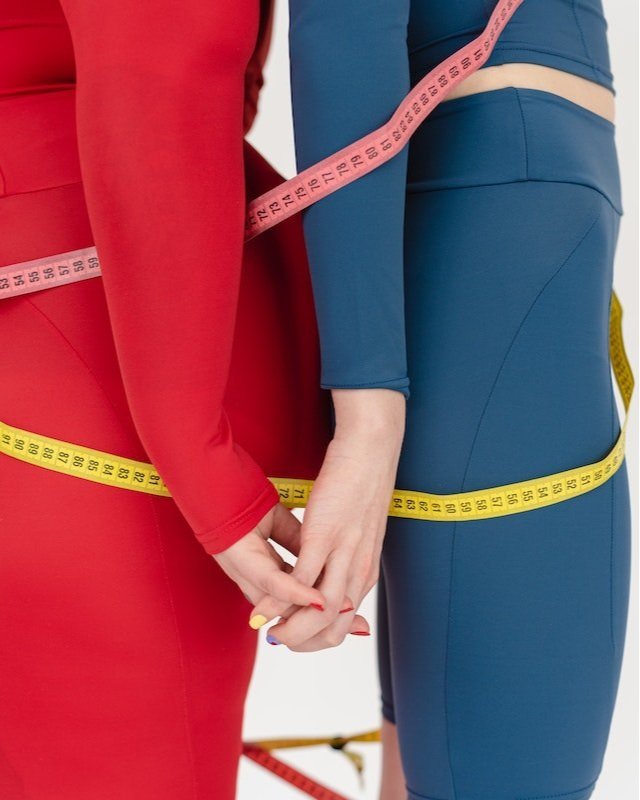Why Sizing Methods Matter
Understanding and applying the appropriate sizing methodology is crucial for fitters when offering diverse brands to their customers. While a cup sizing chart can be a valuable tool, it is unreliable when customers consider brands with different methodologies. Here's why it matters:
· A cup sizing chart can provide reliable guidance when customers explore brands that use the same sizing method.
· The challenge arises when customers encounter brands following different sizing methods, potentially leading to conflicting information.
1. Case in Point - UK Brand with US Sizing:
For instance, if a customer wears a UK 36G and looks at the US sizing on the label, the band size (which uses the diaphragm measurement) stays the same, but the cup changes. In this case, the diaphragm measures 36 inches.
The UK G cup is 9 inches larger than the band size, making the total cup raw measurement 45". The same diaphragm-based methodology and US cup sizing corresponds to an I cup on the US cup sizing chart. So, the UK size, 36G, translates to a US 36I.
2. Plus Size Brand Methodology:
The sizing methodology differs for classic US Plus Size brands such as Elila and Glamorize. These brands often determine the band size by measuring around the top of the bust & under the arms or adding 2-4 inches to the diaphragm measurement. This approach may reduce the required cup size by 2-4 sizes, which is crucial information for customers to understand.
3. Practical Example for Plus Size Method:
Suppose the same customer has a top bust measurement of 40 inches with the full bust measurement of 45". Based on the Plus Size brand's methodology, the calculated bra size is a 40DD and or 38F, depending on the firmness of the body.
4. Cross-Brand Comparisons:
When introducing brands with different sizing methodologies, retailers must help customers align their existing size with the new method. This alignment ensures customers can confidently explore different brands without confusion or frustration.
On a fit note, when transitioning to a new sizing method, especially when trying different brands or methodologies, it's essential to consider sister sizes to find the best fit. Start with the calculated size, 40DD, but encourage the customer to try additional sizes to ensure a comfortable fit.
Suggest the following to try:
· 38G: This sister size involves a 2-inch reduction in the band size (from 40 to 38), which is compensated by an increase of 2 cup sizes (from DD to G). It's a common strategy for achieving a snug fit with a slightly larger cup.
· 38F: A sister size that maintains the same band size (38) while slightly reducing the cup size compared to 40DD.
· 40F: If the customer finds their bust is fuller than the initial measurement suggests, they might feel more comfortable in a fuller cup.
· 40DD: This is the calculated size based on the original methodology and can serve as a reference point.
By trying these different sizes, the customer can determine which provides the most comfortable and flattering fit, especially when adapting to a new sizing method or exploring various brands. This approach ensures a more personalized and satisfactory shopping experience. Remember, everyone who tries on jeans brings more than one pair into the fitting room.
Fitting becomes second nature when working the sizes you keep in stock.
How can you remember - UK to US Plus size – Every band size you go up, go down 2 cup sizes. 36GUK becomes a 38G or 40DD Plus Size.
Helping educate fitters & customers on the varying sizing methodologies employed by different brands is essential for retailers. This knowledge empowers customers to make informed decisions, reduces returns and exchanges, and enhances their shopping experience.

